Firstly I would like to thank 64 Audio for sending me this sample, they were really helpful picking the monitors they thought would suit my music tastes and have excellent customer service. These have had well over 100hrs of burn-in, no real differences were noted.
Gear Used: Audio Opus #2 DAP > U6
Dell desktop > Topping D30 > HeadnHifi O2 amp > U6
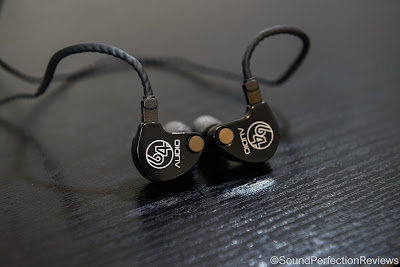
Tech Specs:
6 Balanced armature drivers (2x Low, 2x Mid, 2x High)
3-way passive crossover
apex M20 module
Impedance: 22 Ohms at 1kHz
Sensitivity: 115dB SPL @ 1mW
Freq. Response: 10Hz – 20 kHz
Noise Isolation: -20dB with apex M20 module
https://www.64audio.com/product/1964-U6-Earphone
Packaging, Build quality and Accessories:
The U6 come in the same packaging as the rest of the 64 audio range, custom and universal. It is a small rectangular white box with a big picture and the brand logo on the front, and the company’s story and a bit about the Apex technology on the back. Slide off the outer sleeve and you are presented with a red inner box that has a flap with a picture of a vocalist on it. Lift this up and you’ll find the box which has the monitors and accessories in it, on the underside of the flap is a quick start guide on how to insert them properly and also a bit about safe volume levels. There is a small white tray above the box that holds the tips. The packaging is really slim and looks great; it is simple yet eye catching.

The U6 are built like the rest of the range, and that means they are superbly made. Each side is flawless with no visible seam between the body and faceplate, the 2-pin sockets are tight the cable is the standard affair you get with most monitors but this one has 4 separate cores. The cable is nothing special with good strain relief, but this is easily swapped out too. The Apex modules are very precision pieces and look excellent, everything just feels really well put together.
Accessory wise the U6 come with a 64 Audio hard case which has separate compartments for each earpiece, along with holes for extra Apex modules, and a part for the cable clip and wax cleaner. The case is really nice, and has a pot of silica to absorb moisture and prolong the life of your monitors. Included tip wise are Comply foam tips in S, M and L, along with a pair of bi-flange tips, I personally like a wide array of tips so this could be improved upon. However the comply tips are really good and most will be able to get a great seal with them. Also included is a cable clip and wax tool, so overall a complete package just missing some extra tip sizes in my opinion.

Comfort, Isolation and Apex Technology:
Now I have tiny odd shaped ears, so the left side fits really nice and flush, with the housing fitting into my cymba as it should. The right side however gets pushed out of my cymba due to my awkward ears. This does not affect the sound or seal, and they are superbly comfortable, they just look a bit odd. They will fit the majority of people with normal ears fine, as I have had these issues with other IEM’s too. I find Comply tips to be very comfortable, but I prefer silicone with these for sound reasons, I have some XS spinfits on them and they fit securely and are not causing comfort issues at all. I personally prefer cables without memory wire, but the stock one is perfectly acceptable.

Isolation depends on the Apex module used, the stock is the M20 which offers -20dB of isolation, this is a great all rounder and offers a good deal of isolation but not on par with fully sealed IEM’s. Using the optional M15 module you get -15dB of isolation, but also slightly different sound. Different sounds and levels of isolation are just one of the benefits of the Apex technology.
Now I won’t go into detail about the Apex technology, so you can read here:https://www.64audio.com/technology
“When you seal a miniature speaker in an ear canal, the air inside becomes trapped. As the speaker produces sound it moves the air and causes the ear drum to work excessively. The pressure exerted on the ear drum causes ear fatigue, also known as listener fatigue.
By way of a pneumatically interactive vent the apexTM Technology (Air Pressure Exchange) relieves this pressure. With apex the sound is also dramatically improved across the spectrum, the soundstage is more expansive than ever before, and the technology is versatile allowing for a selection of isolation levels — all while minimizing ear fatigue.”
How much of a difference this makes, I am not sure, I did find that they never became fatiguing over long listening sessions and you can push them a little harder than normal IEM’s, however I am careful with my volume levels so haven’t tested at high volumes for longer periods of time.

Sound:
I will split this into the main stock sound with spinfit tips and M20 module, I will then write a little on the M15 module and other cables.
Lows: The power and impact the lows have on these is really impressive, what is more impressive is how controlled they are, never getting in the way of the rest of the sound. One of my first thoughts was wow, these really extend low and those thoughts have not changed, you can really hear the sub-bass rumble on tracks with these.
The bass is not overly boosted, having a slight lift with excellent dynamics and punch. They can really hit with authority, kick drums don’t sound hollow or flat carrying air with each thump. Bass guitars really cut through the mix, being easy to distinguish and follow.
I fear that I am making the lows sound like they are boosted and that these are bass heavy, but they are not, it is just the power behind the lows is very good.
Getting the lows to have the dynamic punch these have, with speed and agility yet still retaining fullness and impact is not an easy feat for dynamic drivers, let alone BA drivers.
Mids: The mids cut through with excellent texture and tone, they are not clinical and don’t ever sound thin. Guitar tones are powerful and real, with excellent imaging and separation never sounding congested. Male vocals are a treat on these, listening to Thrice, Dustin’s vocals sound pitch perfect without any additional flavour being added by the IEM’s.
Every pluck of a string and finger slide on a fret board is heard in acoustic recordings, giving an intimate performance that allows you to hear subtle details without fatigue.
The U6 can handle both male and female vocals well, but male vocals come across a slight bit better due to a slight dip in the upper midrange. The slight dip in the upper midrange means that there is no sibilance or glare and these remain completely fatigue free. The most impressive part is how the lows are full and dynamic, yet never seem to affect the lower midrange.
Highs: The dip in the upper midrange/lower treble region takes away a little bit of the initial impact of cymbal hits and thus the treble seems a little bit tamed and behind the rest of the sound. This is true; the highs do take a backseat somewhat but once you get past the initial impact there is really good detail and air with impressive extension.
The highs are not upfront and in your face, but they are very well placed in the mix when it comes to imaging, and there is still plenty of resolution up top that really shines when listening to well recorded music. Even when the music gets busy the highs are never masked or subdued, they are always there adding some sparkle without fatigue. Again I will add that the tonality of the highs is very good with them sounding very natural without a hint of grain or metallic sheen.
The separation on the U6 is excellent; they have a warmer thicker sound with the M20 module but still retain good layering. The soundstage is also a strong point of the U6 being spacious and wide, with great imaging and plenty of out of head experiences depending on the recording.

M15 Module, 64 Audio were kind enough to provide me with a pair of M15 modules to compare the sound of each. I won’t go in depth like above but I will try and describe the key differences.
First off we will start with the lows again, with the M15 module the lows lose a little bit of the thicker tone that the M20 offers, they become a little less full but gain a bit more control. The lows don’t hit with as much impact as the M20 module, but they are slightly quicker and cleaner. The mid bass is slightly more prominent over the sub-bass now.
The midrange gains a little bit more air and separation, the tonality is still spot on just they now sound a little more open. Detail is still the same, but the extra separation means they are easier to pick out.
The highs are still smooth and fatigue free, however the extension feels a bit more effortless and the is a slight bit more presence. They are still far from being bright, but sound a bit more balanced with the M15 module.
Overall the M15 module tones down the sub-bass a little without losing extension, the lows are also a little bit leaner and more in line with the rest of the frequency response. The mids gain some extra air around notes and better separation, and the highs gain a little more presence without any additional peaks. They still retain a smoother sound in general, but sound a little more linear with the M15 module over the thicker more impactful sound of the M20 module.

Cable wise, I know many people do not believe in differences; however I believe they can make a small difference and that synergy is key.
I have a homemade Toxic Cables silver plated copper cable, and also an Effect Audio Ares II on hand and personally prefer the toxic cables one. I found that using that cable with the M20 module, the lows tightened up a little with some added sparkle up top. The separation also got a little better; these are small differences but added to my overall enjoyment of the U6.
The Ares II adds some sparkle, but I found that I wanted the lows to be a little more controlled which it does not offer, it retains the full bodied sound of the stock lows. With the M15 module the Ares II works very well, the soundstage is also a little enhanced with it, but I think I still prefer the M20 module + Toxic Cables sound, it is tight, balanced and non fatiguing.

Conclusion: $899 is a lot of money to shell out on headphones, add a little more if you want the M15 modules, but you can really tweak the sound of these with cables and modules if you like. The stock sound with the M20 module is thick, smooth and yet still with plenty of detail to be heard. They offer a warm and non fatiguing sound that a lot of people will enjoy. The power that the lows have to offer and the pitch perfect midrange is stellar yet I found myself craving a little added sparkle.
By just swapping out to the M15 module, the U6 offered a more balanced listening experience without any added peaks or harshness. They still offer a smooth slightly fuller sound sound with the M15 module, but it gains better balance and control, with a bit more air at the expense of a little bass impact. I highly recommend listening to the U6 if you can, as it is an excellent IEM in its price range and the build quality and customer service is all excellent.
Sound Perfection Rating: 9/10 (Smooth, non-fatiguing, pitch perfect mids, realistic bass, layering and detail retrieval, ability to tune the sound with Apex modules)




Gear Used: Audio Opus #2 DAP > U6
Dell desktop > Topping D30 > HeadnHifi O2 amp > U6

Tech Specs:
6 Balanced armature drivers (2x Low, 2x Mid, 2x High)
3-way passive crossover
apex M20 module
Impedance: 22 Ohms at 1kHz
Sensitivity: 115dB SPL @ 1mW
Freq. Response: 10Hz – 20 kHz
Noise Isolation: -20dB with apex M20 module
https://www.64audio.com/product/1964-U6-Earphone
Packaging, Build quality and Accessories:
The U6 come in the same packaging as the rest of the 64 audio range, custom and universal. It is a small rectangular white box with a big picture and the brand logo on the front, and the company’s story and a bit about the Apex technology on the back. Slide off the outer sleeve and you are presented with a red inner box that has a flap with a picture of a vocalist on it. Lift this up and you’ll find the box which has the monitors and accessories in it, on the underside of the flap is a quick start guide on how to insert them properly and also a bit about safe volume levels. There is a small white tray above the box that holds the tips. The packaging is really slim and looks great; it is simple yet eye catching.

The U6 are built like the rest of the range, and that means they are superbly made. Each side is flawless with no visible seam between the body and faceplate, the 2-pin sockets are tight the cable is the standard affair you get with most monitors but this one has 4 separate cores. The cable is nothing special with good strain relief, but this is easily swapped out too. The Apex modules are very precision pieces and look excellent, everything just feels really well put together.
Accessory wise the U6 come with a 64 Audio hard case which has separate compartments for each earpiece, along with holes for extra Apex modules, and a part for the cable clip and wax cleaner. The case is really nice, and has a pot of silica to absorb moisture and prolong the life of your monitors. Included tip wise are Comply foam tips in S, M and L, along with a pair of bi-flange tips, I personally like a wide array of tips so this could be improved upon. However the comply tips are really good and most will be able to get a great seal with them. Also included is a cable clip and wax tool, so overall a complete package just missing some extra tip sizes in my opinion.

Comfort, Isolation and Apex Technology:
Now I have tiny odd shaped ears, so the left side fits really nice and flush, with the housing fitting into my cymba as it should. The right side however gets pushed out of my cymba due to my awkward ears. This does not affect the sound or seal, and they are superbly comfortable, they just look a bit odd. They will fit the majority of people with normal ears fine, as I have had these issues with other IEM’s too. I find Comply tips to be very comfortable, but I prefer silicone with these for sound reasons, I have some XS spinfits on them and they fit securely and are not causing comfort issues at all. I personally prefer cables without memory wire, but the stock one is perfectly acceptable.

Isolation depends on the Apex module used, the stock is the M20 which offers -20dB of isolation, this is a great all rounder and offers a good deal of isolation but not on par with fully sealed IEM’s. Using the optional M15 module you get -15dB of isolation, but also slightly different sound. Different sounds and levels of isolation are just one of the benefits of the Apex technology.
Now I won’t go into detail about the Apex technology, so you can read here:https://www.64audio.com/technology
“When you seal a miniature speaker in an ear canal, the air inside becomes trapped. As the speaker produces sound it moves the air and causes the ear drum to work excessively. The pressure exerted on the ear drum causes ear fatigue, also known as listener fatigue.
By way of a pneumatically interactive vent the apexTM Technology (Air Pressure Exchange) relieves this pressure. With apex the sound is also dramatically improved across the spectrum, the soundstage is more expansive than ever before, and the technology is versatile allowing for a selection of isolation levels — all while minimizing ear fatigue.”
How much of a difference this makes, I am not sure, I did find that they never became fatiguing over long listening sessions and you can push them a little harder than normal IEM’s, however I am careful with my volume levels so haven’t tested at high volumes for longer periods of time.

Sound:
I will split this into the main stock sound with spinfit tips and M20 module, I will then write a little on the M15 module and other cables.
Lows: The power and impact the lows have on these is really impressive, what is more impressive is how controlled they are, never getting in the way of the rest of the sound. One of my first thoughts was wow, these really extend low and those thoughts have not changed, you can really hear the sub-bass rumble on tracks with these.
The bass is not overly boosted, having a slight lift with excellent dynamics and punch. They can really hit with authority, kick drums don’t sound hollow or flat carrying air with each thump. Bass guitars really cut through the mix, being easy to distinguish and follow.
I fear that I am making the lows sound like they are boosted and that these are bass heavy, but they are not, it is just the power behind the lows is very good.
Getting the lows to have the dynamic punch these have, with speed and agility yet still retaining fullness and impact is not an easy feat for dynamic drivers, let alone BA drivers.
Mids: The mids cut through with excellent texture and tone, they are not clinical and don’t ever sound thin. Guitar tones are powerful and real, with excellent imaging and separation never sounding congested. Male vocals are a treat on these, listening to Thrice, Dustin’s vocals sound pitch perfect without any additional flavour being added by the IEM’s.
Every pluck of a string and finger slide on a fret board is heard in acoustic recordings, giving an intimate performance that allows you to hear subtle details without fatigue.
The U6 can handle both male and female vocals well, but male vocals come across a slight bit better due to a slight dip in the upper midrange. The slight dip in the upper midrange means that there is no sibilance or glare and these remain completely fatigue free. The most impressive part is how the lows are full and dynamic, yet never seem to affect the lower midrange.
Highs: The dip in the upper midrange/lower treble region takes away a little bit of the initial impact of cymbal hits and thus the treble seems a little bit tamed and behind the rest of the sound. This is true; the highs do take a backseat somewhat but once you get past the initial impact there is really good detail and air with impressive extension.
The highs are not upfront and in your face, but they are very well placed in the mix when it comes to imaging, and there is still plenty of resolution up top that really shines when listening to well recorded music. Even when the music gets busy the highs are never masked or subdued, they are always there adding some sparkle without fatigue. Again I will add that the tonality of the highs is very good with them sounding very natural without a hint of grain or metallic sheen.
The separation on the U6 is excellent; they have a warmer thicker sound with the M20 module but still retain good layering. The soundstage is also a strong point of the U6 being spacious and wide, with great imaging and plenty of out of head experiences depending on the recording.

M15 Module, 64 Audio were kind enough to provide me with a pair of M15 modules to compare the sound of each. I won’t go in depth like above but I will try and describe the key differences.
First off we will start with the lows again, with the M15 module the lows lose a little bit of the thicker tone that the M20 offers, they become a little less full but gain a bit more control. The lows don’t hit with as much impact as the M20 module, but they are slightly quicker and cleaner. The mid bass is slightly more prominent over the sub-bass now.
The midrange gains a little bit more air and separation, the tonality is still spot on just they now sound a little more open. Detail is still the same, but the extra separation means they are easier to pick out.
The highs are still smooth and fatigue free, however the extension feels a bit more effortless and the is a slight bit more presence. They are still far from being bright, but sound a bit more balanced with the M15 module.
Overall the M15 module tones down the sub-bass a little without losing extension, the lows are also a little bit leaner and more in line with the rest of the frequency response. The mids gain some extra air around notes and better separation, and the highs gain a little more presence without any additional peaks. They still retain a smoother sound in general, but sound a little more linear with the M15 module over the thicker more impactful sound of the M20 module.

Cable wise, I know many people do not believe in differences; however I believe they can make a small difference and that synergy is key.
I have a homemade Toxic Cables silver plated copper cable, and also an Effect Audio Ares II on hand and personally prefer the toxic cables one. I found that using that cable with the M20 module, the lows tightened up a little with some added sparkle up top. The separation also got a little better; these are small differences but added to my overall enjoyment of the U6.
The Ares II adds some sparkle, but I found that I wanted the lows to be a little more controlled which it does not offer, it retains the full bodied sound of the stock lows. With the M15 module the Ares II works very well, the soundstage is also a little enhanced with it, but I think I still prefer the M20 module + Toxic Cables sound, it is tight, balanced and non fatiguing.

Conclusion: $899 is a lot of money to shell out on headphones, add a little more if you want the M15 modules, but you can really tweak the sound of these with cables and modules if you like. The stock sound with the M20 module is thick, smooth and yet still with plenty of detail to be heard. They offer a warm and non fatiguing sound that a lot of people will enjoy. The power that the lows have to offer and the pitch perfect midrange is stellar yet I found myself craving a little added sparkle.
By just swapping out to the M15 module, the U6 offered a more balanced listening experience without any added peaks or harshness. They still offer a smooth slightly fuller sound sound with the M15 module, but it gains better balance and control, with a bit more air at the expense of a little bass impact. I highly recommend listening to the U6 if you can, as it is an excellent IEM in its price range and the build quality and customer service is all excellent.
Sound Perfection Rating: 9/10 (Smooth, non-fatiguing, pitch perfect mids, realistic bass, layering and detail retrieval, ability to tune the sound with Apex modules)









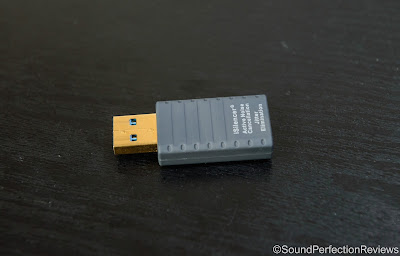


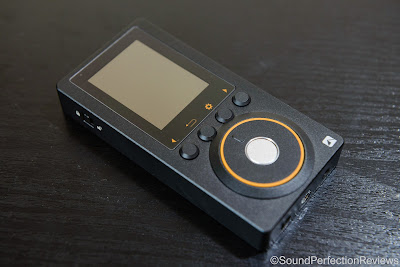
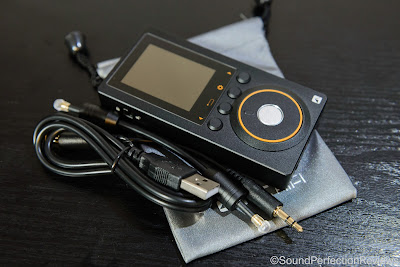
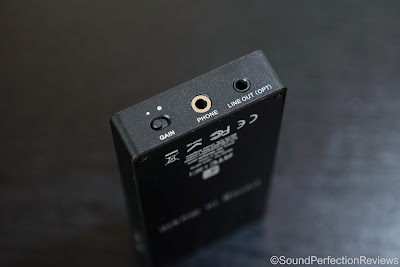
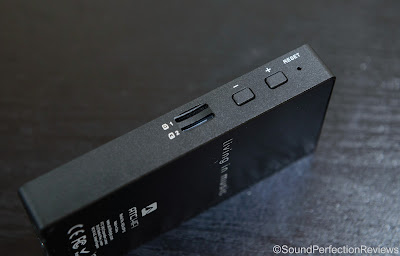
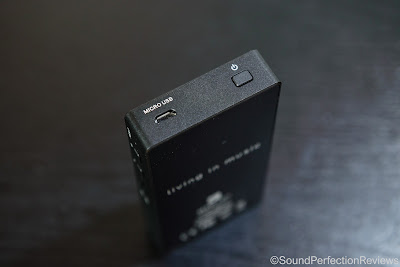
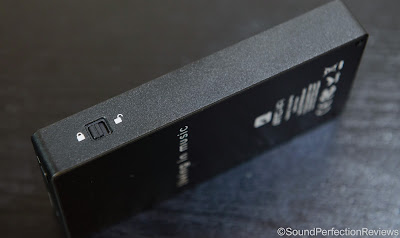
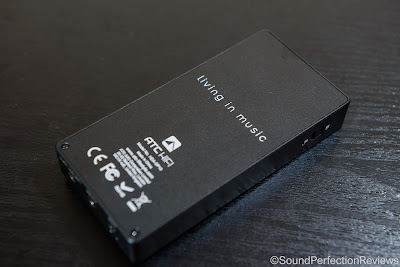















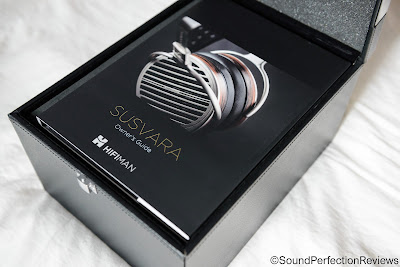
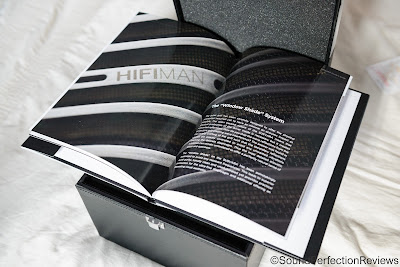



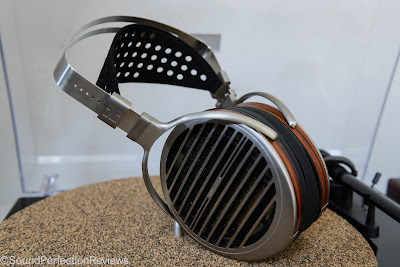

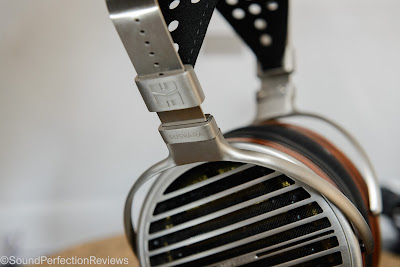
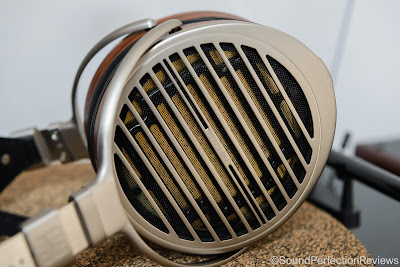







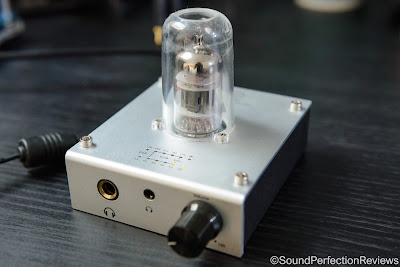
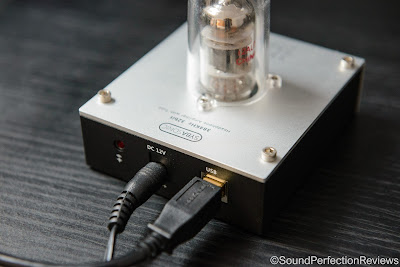
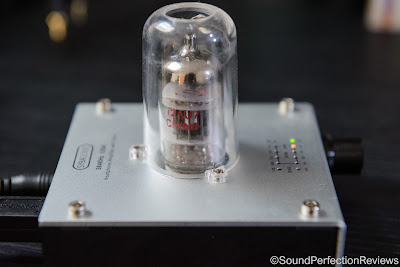
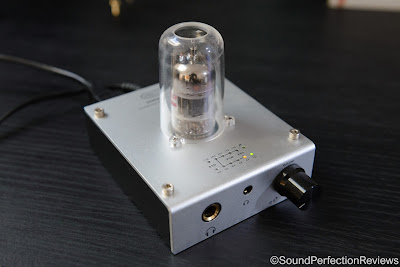









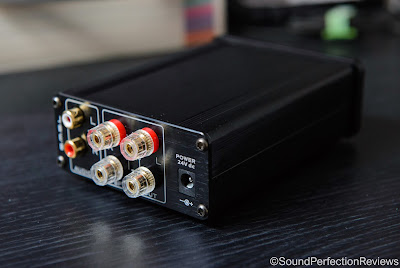

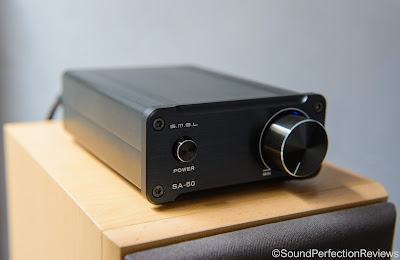










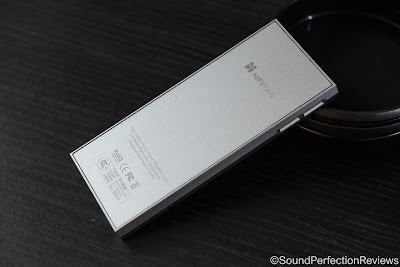






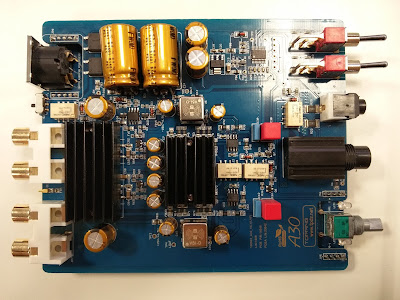










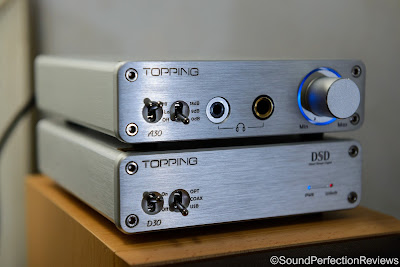
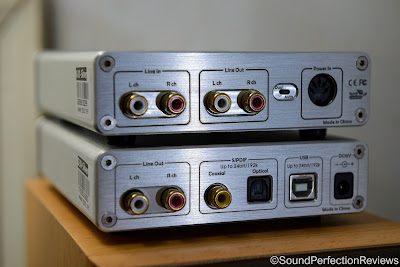
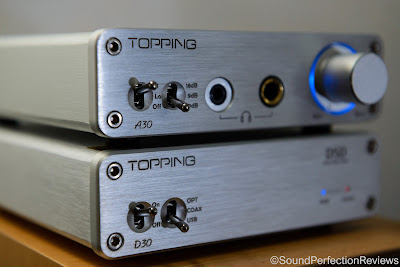

















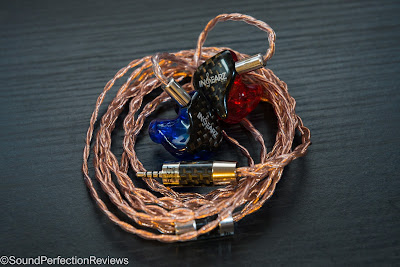









But it's not a T amp, as it doesn't use a Tripath chip. (And it does matter, especially in this forum.) It uses an STM TDA7492 chipset.
It's useful to know the chipset not only because it tells something about the sound signature of the amp, but also because it lets people assess the specifications.